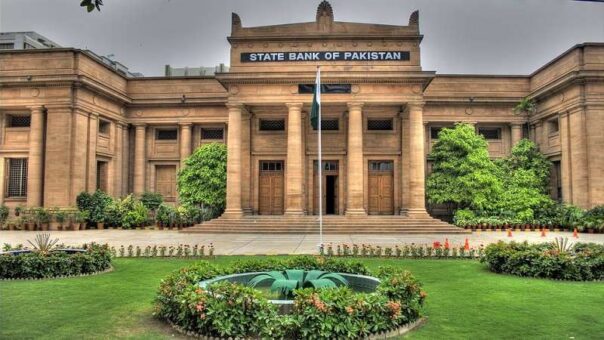(PkRevenue.com) – Foreign investors have withdrawn a substantial $887 million from Pakistan between July 2023 and April 2024, according to official data released on Tuesday.
This amount, extracted under the category of profit and dividends, signifies a significant economic movement within the country’s financial landscape.
The State Bank of Pakistan (SBP) reported that the foreign investors repatriated $887 million in profit and dividends during the first ten months of the fiscal year 2023-24 (FY24), which is a dramatic increase compared to $253.4 million in the same period of the previous fiscal year (FY23). This represents a remarkable growth of 250 percent year-over-year.
Factors Contributing to the Surge
Analysts attribute this surge to the removal of previous restrictions on the outflow of foreign exchange. Last fiscal year, the Pakistani federal government had imposed certain limitations on foreign exchange outflows to maintain the country’s foreign reserves at sustainable levels. These restrictions led to a lower volume of repatriated profits and dividends by foreign companies operating in Pakistan. The lifting of these restrictions has evidently facilitated a more significant repatriation of funds by foreign investors.
A detailed analysis reveals that the bulk of the repatriated amount was on account of Foreign Direct Investment (FDI). In fact, FDI accounted for 91 percent of the total outflows. Specifically, $811.6 million were repatriated as returns on FDI during the first ten months of FY24, compared to just $208 million during the corresponding period of the previous fiscal year. This indicates an increase of 290 percent, or $604 million.
Breakdown by Sector
Repatriation of profits and dividends from portfolio investment also saw a considerable rise, increasing by 66 percent or $30 million. Foreign investors sent $75.4 million abroad as profit on portfolio investments during July-April of FY24, up from $45.4 million in the same period last year.
An examination of sector-specific data provides further insights. The financial business sector saw the largest outflow, with $149.6 million repatriated. The petroleum refining sector followed, with foreign investors repatriating $132 million. The power sector also saw significant outflows, with $121 million sent abroad.
Monthly Analysis
On a monthly basis, the figures vary. In April 2024, for instance, $56.6 million were repatriated from Pakistan. This includes $43 million as returns on FDI and $13.7 million as profit on portfolio investments. This monthly data highlights the continuous, albeit fluctuating, movement of capital out of the country.
Economic Implications
The significant repatriation of profits and dividends underscores several economic implications for Pakistan. On one hand, it reflects the profitability of foreign investments in the country. The surge in repatriations indicates that foreign investors are successfully generating profits and are confident in repatriating these profits due to the lifted restrictions.
However, this substantial outflow also puts pressure on Pakistan’s foreign exchange reserves. As foreign investors withdraw their earnings, the country’s reserves are depleted, which can affect the overall economic stability. This is particularly concerning for a country like Pakistan, which has been grappling with economic challenges, including a high current account deficit and external debt.
Policy Considerations
In light of these developments, policymakers face a complex balancing act. Encouraging foreign investment is crucial for economic growth and development. However, ensuring that this investment translates into sustainable economic benefits for the country, without unduly depleting foreign exchange reserves, is equally important.
The government’s previous decision to impose restrictions on foreign exchange outflows was a step in this direction, aimed at stabilizing the reserves. However, the subsequent lifting of these restrictions and the resultant surge in outflows suggest that further policy refinements may be necessary.
One potential approach could involve setting more stringent conditions on profit repatriation, or encouraging reinvestment of profits within the country. This could help retain some of the capital within Pakistan, fostering further economic development. Another approach could involve improving the business environment to attract more diverse and sustainable forms of investment.
Looking Forward
As Pakistan navigates these challenges, the role of foreign investment remains a double-edged sword. On the positive side, foreign investments bring much-needed capital, technology, and expertise into the country, which can spur economic growth and development. On the downside, the substantial outflows, as seen in the recent data, highlight the vulnerabilities associated with relying heavily on foreign capital.
The current fiscal year’s trends will be closely monitored by analysts and policymakers alike. The focus will likely be on striking a balance that maximizes the benefits of foreign investment while minimizing the economic risks associated with large-scale capital outflows.
The $887 million repatriated by foreign investors in FY24 underscores both the opportunities and challenges facing Pakistan’s economy. While it reflects the profitability and confidence of foreign investors, it also calls for careful management and policy intervention to ensure that the country can sustain its economic growth and maintain financial stability. As the fiscal year progresses, the actions taken by the Pakistani government and the responses of the foreign investment community will be pivotal in shaping the country’s economic trajectory.
